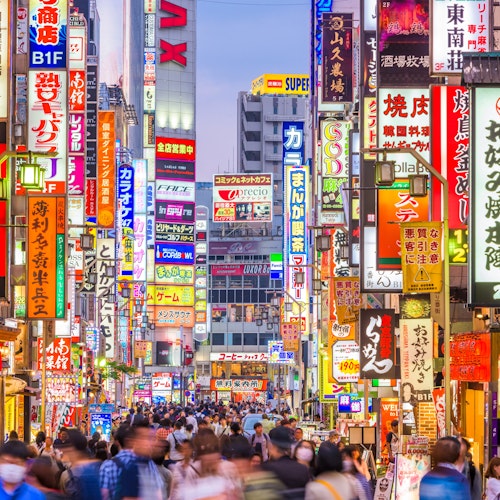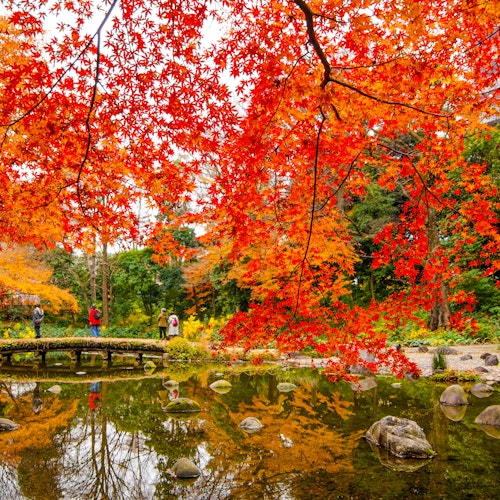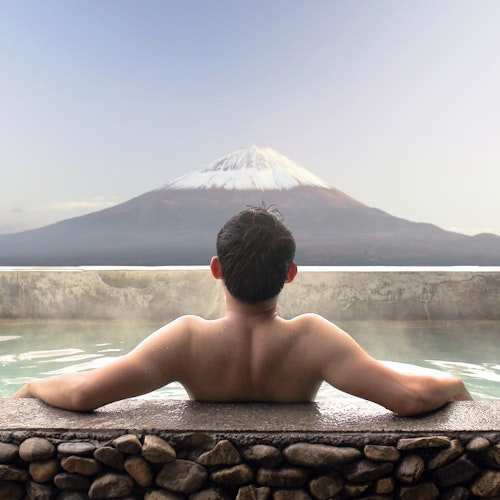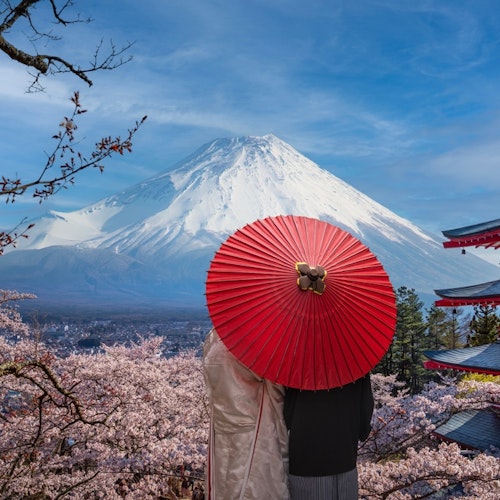
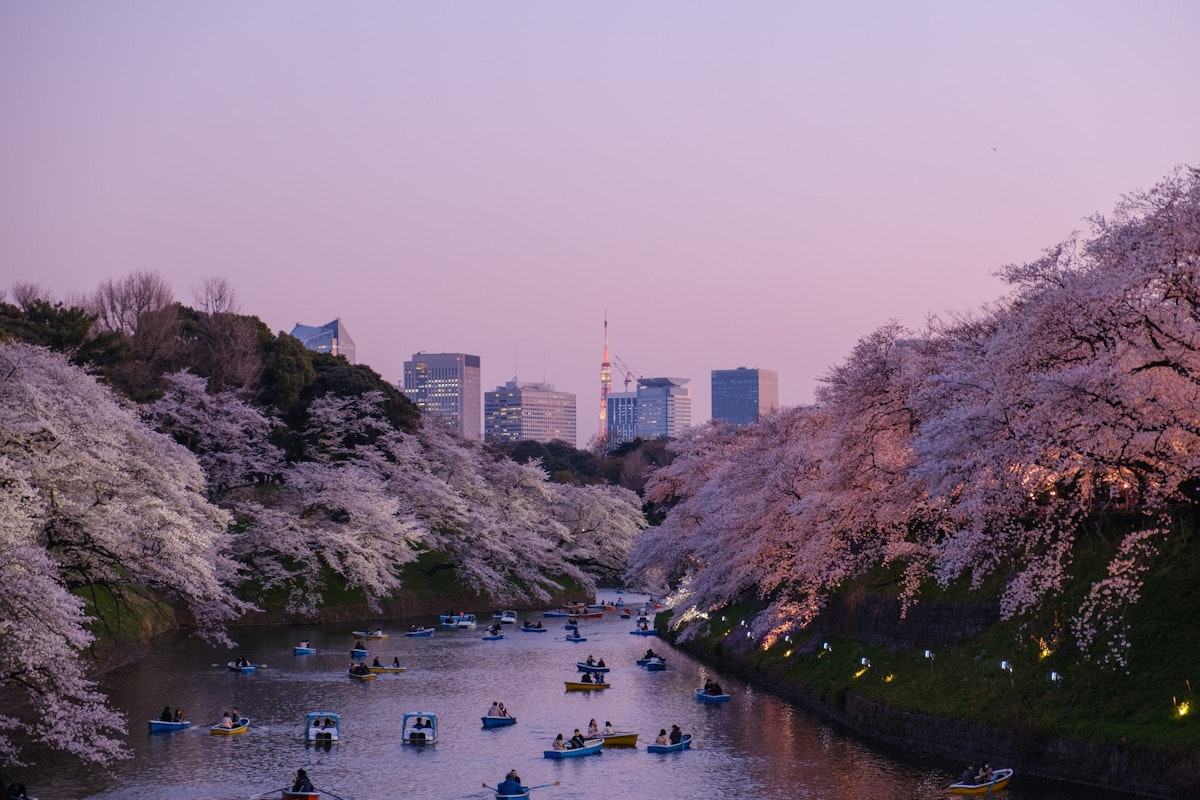
日本是一个充满对比的国家,古老的传统与现代科技相遇,自然之美与繁忙的城市共存。难怪来自世界各地的摄影师纷纷涌向这个国家,捕捉其令人惊叹的风景、 vibrant文化和独特魅力。然而,面对如此多的景点和体验,确定从何开始可能会令人感到挑战。
在这篇文章中,我们将为您提供一些在日本拍摄美丽照片的最佳摄影技巧和技巧。从追寻完美的光线到探索不同的季节,我们将为您提供创建日本这个不可思议的国家的令人惊叹的图像所需的工具。因此,无论您是经验丰富的专业人士还是初学者,拿起您的相机,准备好发现捕捉日本美丽的最佳摄影技巧。
日本多样的景观和迷人的文化提供了捕捉令人惊叹照片的广泛机会。出色照片的一个最重要元素就是光线,而日本的日出和日落特别令人叹为观止。这个国家在地球上的独特位置意味着这里的光线常常与您所习惯的不同,为摄影师提供了新的视角。
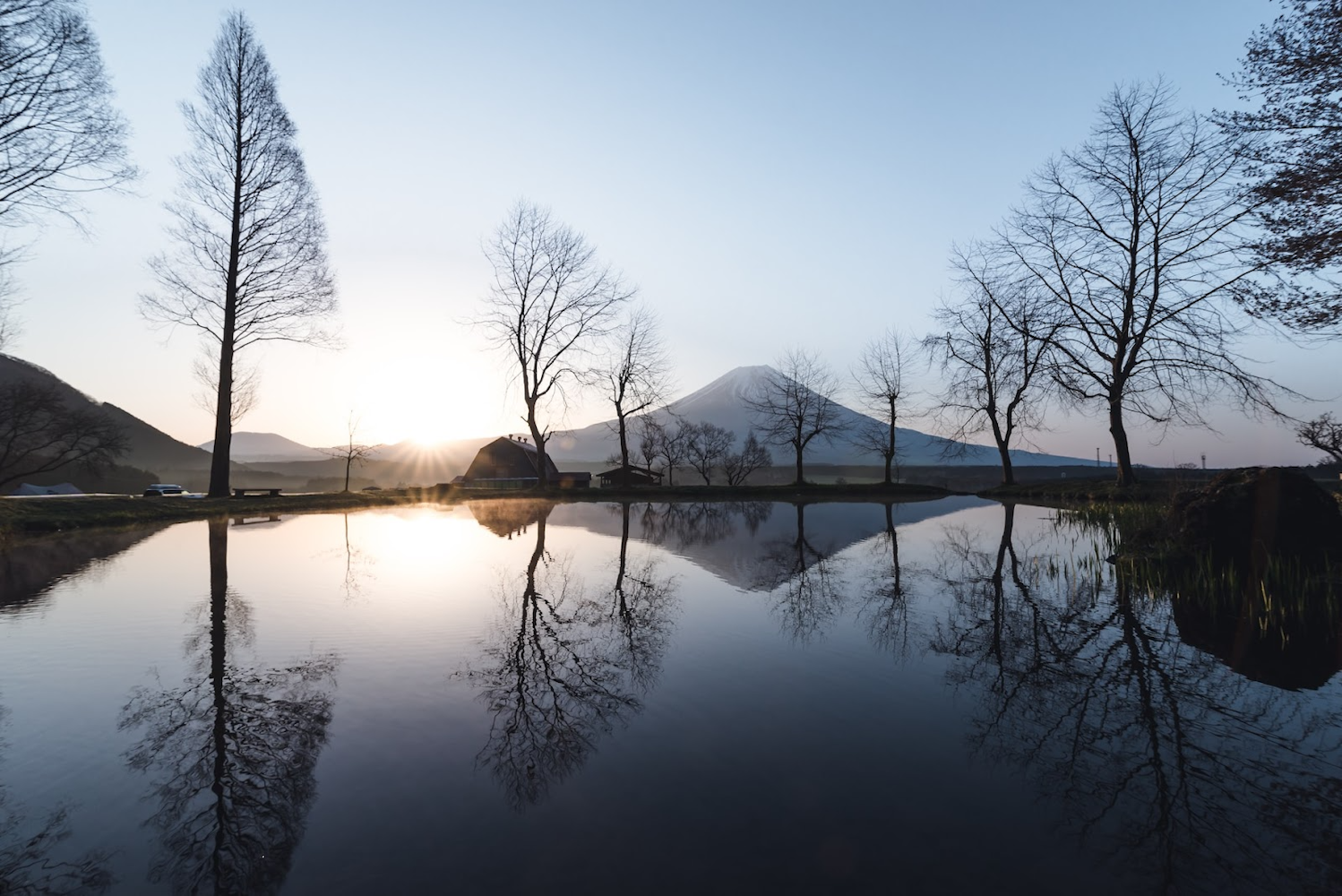
日本的清晨是一个神奇的时刻,尤其是在秋冬季节,空气清新而透明。黎明的柔和光线非常适合拍摄宁静的风景,如雾蒙蒙的山脉或宁静的寺庙。为了捕捉完美的镜头,尽量在日出之前就到达地点,并提前设置设备。使用三脚架保持相机稳定,尝试不同的角度和构图,以捕捉日本宁静清晨的本质。
此外,日本的清晨同样适合拍摄热闹的市场和城市街道,当它们开始苏醒时。在东京,筑地鱼市场提供了一个独特的机会,可以捕捉到传统日本市场的热闹气氛。请务必早到,因为市场很快就会人满为患,并考虑使用快速镜头以应对低光条件。
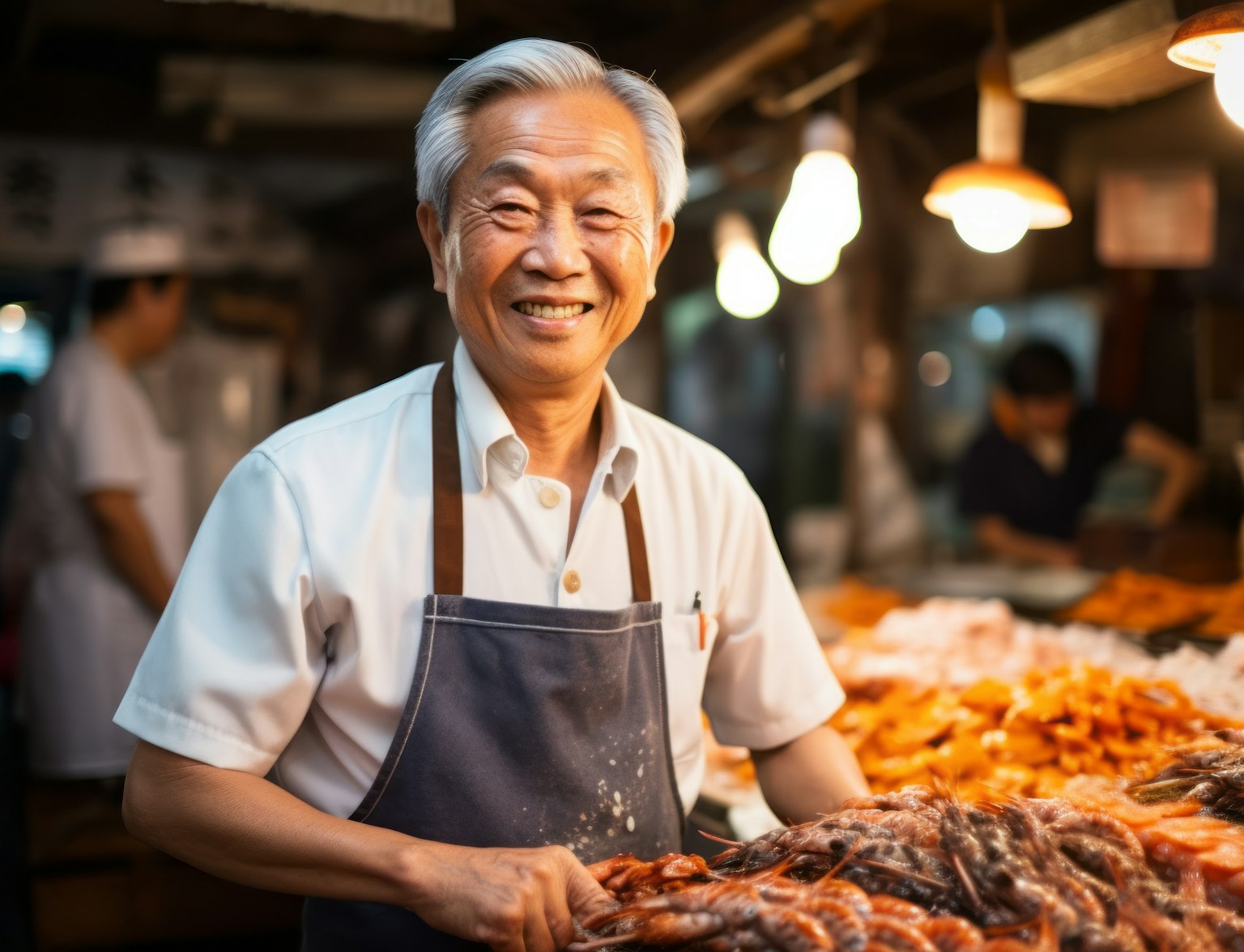
清晨去参观著名的鱼市场。
日本的日落同样令人惊叹,落日的温暖光线创造出戏剧性和多彩的天空。此时城市充满生机,霓虹灯照亮街道和建筑。为了捕捉最佳镜头,试着捕捉日落的暖色调与城市灯光的冷色调之间的对比。三脚架对于在低光环境中捕捉清晰的图像也是必不可少的。不要害怕尝试长时间曝光和不同的快门速度,以捕捉完美的镜头。
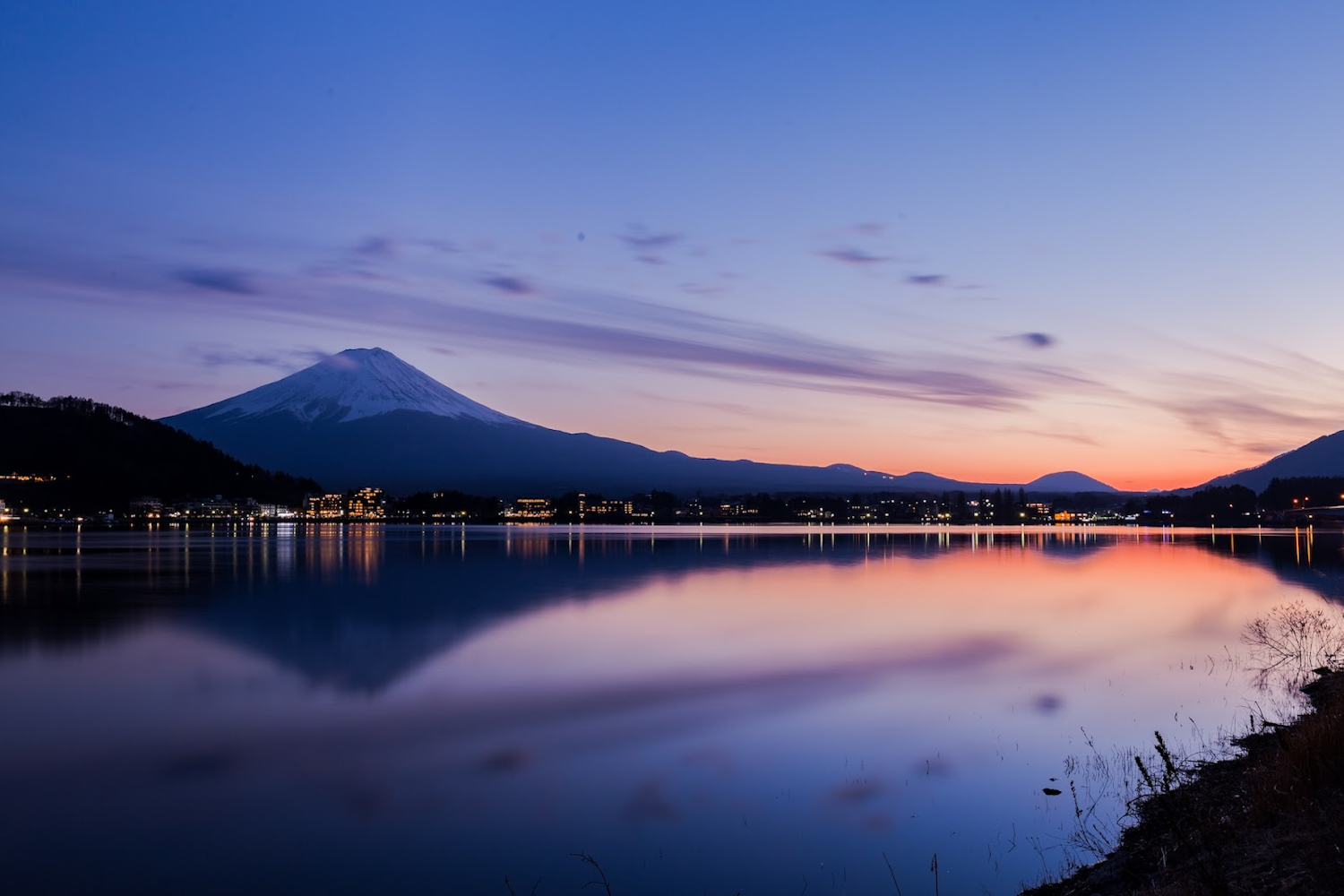
除了拍摄城市景观外,日落也是捕捉日本自然奇迹的绝佳时机。标志性的富士山是日落摄影的受欢迎主题,其戏剧性的轮廓和周围的风景。然而,出发前务必查看天气预报,因为云层和雾气可能会遮挡视野。
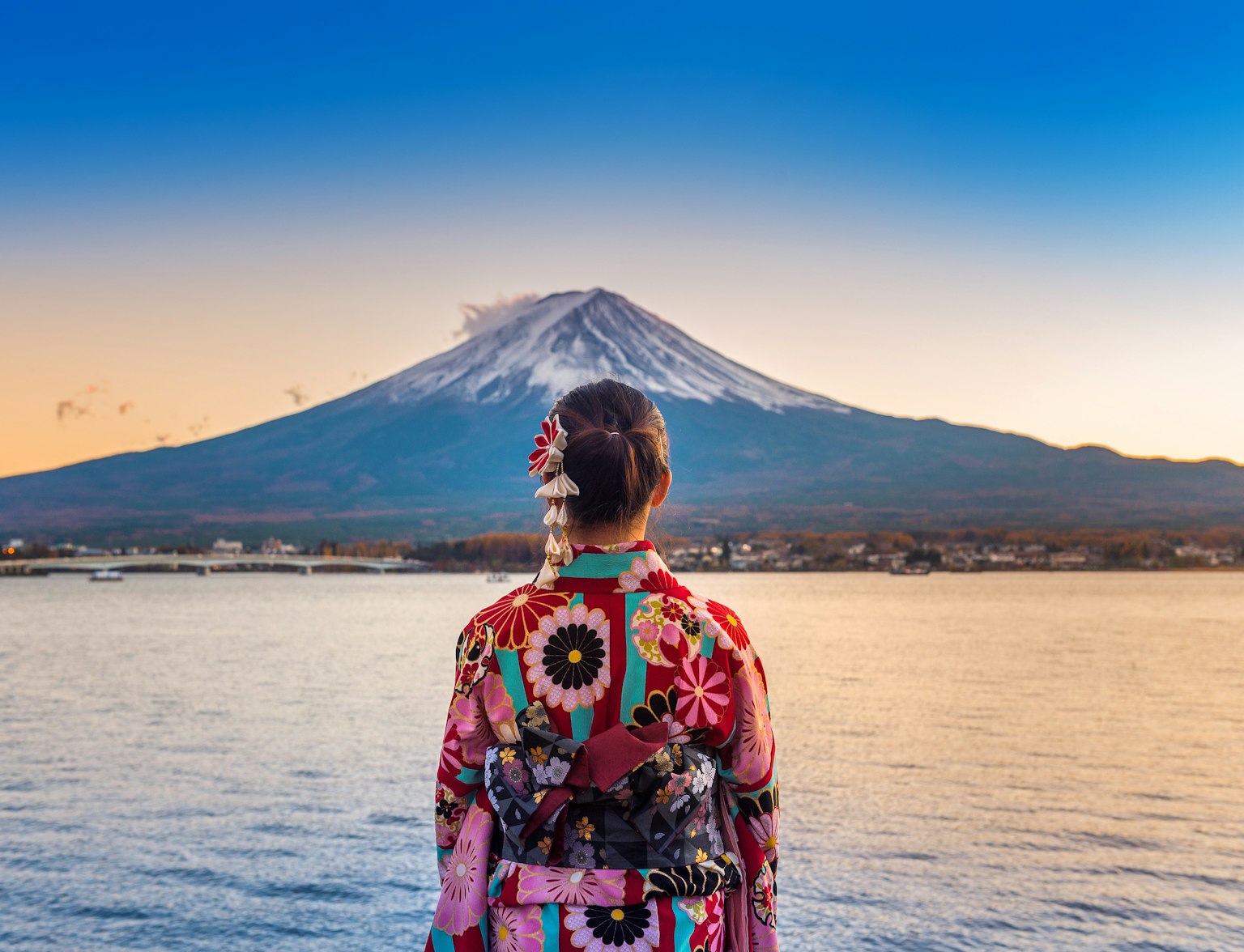
在此行程中体验日本令人惊叹的美丽。
日本的四个不同季节各自带来独特的魅力和美丽,为摄影师提供了无尽的机会去捕捉这个国家的精髓。从春天的樱花到冬天的雪域,日本的季节提供了多种摄影可能性。
日本的春天与樱花季节同义。娇嫩的粉色和白色花朵为照片创造了令人惊叹的背景,无论您是在城市还是乡村拍摄。为了捕捉完美的镜头,尝试找到一个视野良好的地点,比如山顶或公园。
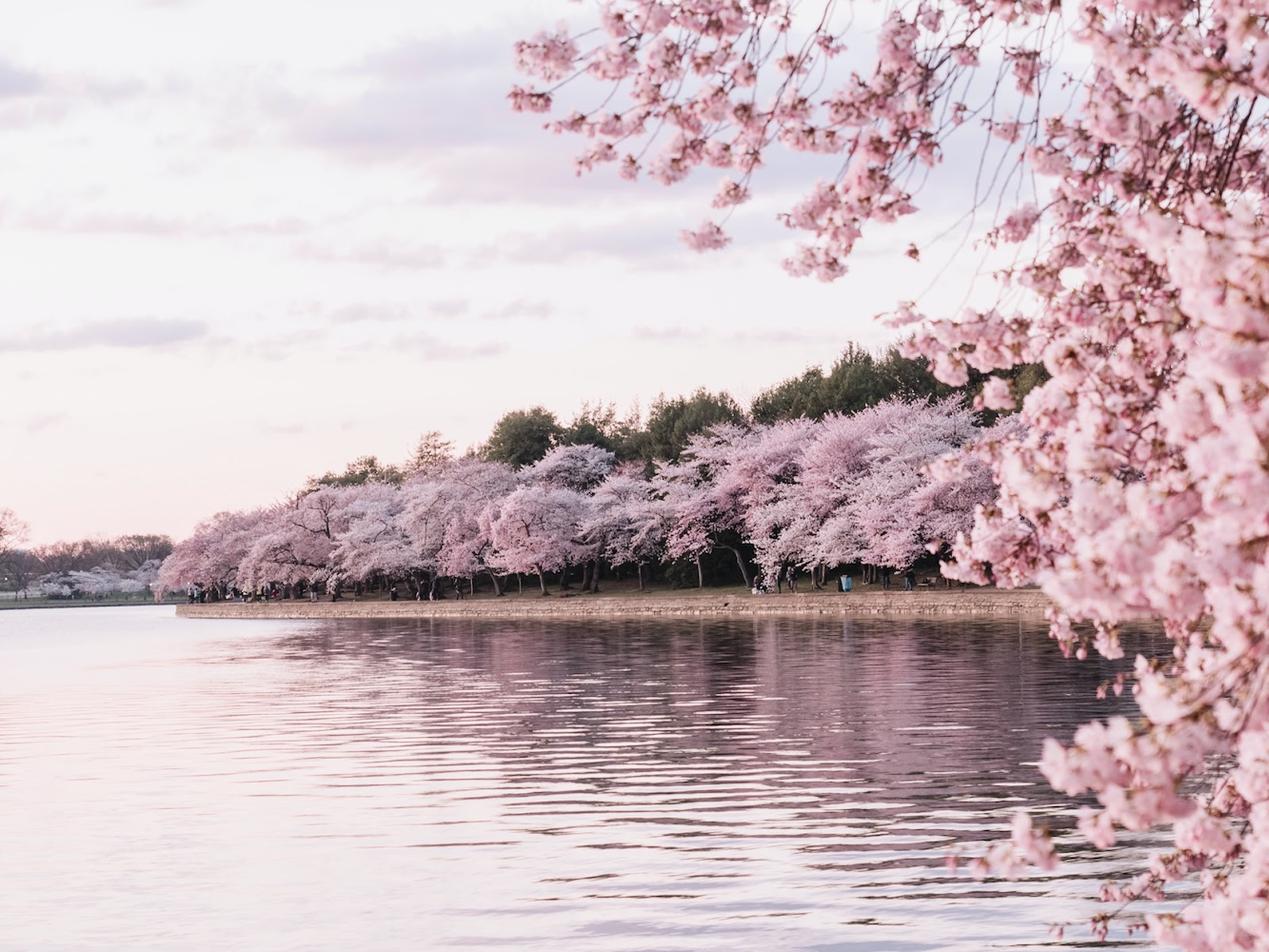
尝试不同的镜头,例如广角或长焦镜头,以捕捉这个魔幻季节的本质。时机至关重要,因为花期仅持续几周,请相应安排您的旅行。
日本的夏天炎热潮湿,但也是节日、烟火和户外活动的季节。郁郁葱葱的绿意和清澈的蓝天为照片提供了迷人的背景。为了捕捉日本夏天的本质,关注人们和文化。街头节日、本地美食和传统服装都为捕捉独特而难忘的图像提供了良机。
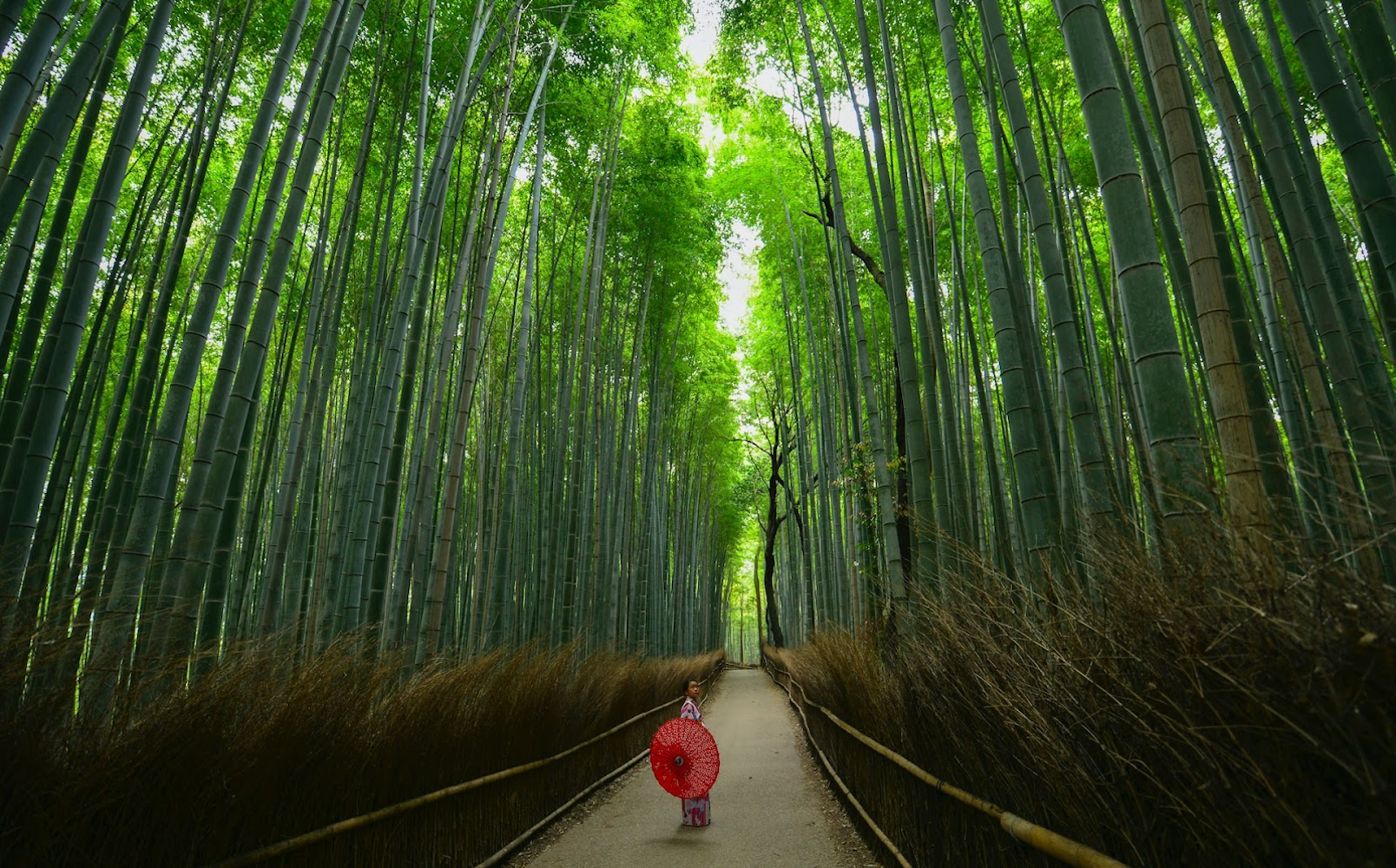
除了节日和户外活动,日本的夏天也是捕捉惊艳日落和城市风光的好时机。落日的温暖光线与城市灯光形成美丽的对比,晴朗的天空为捕捉城市活力提供了完美的背景。
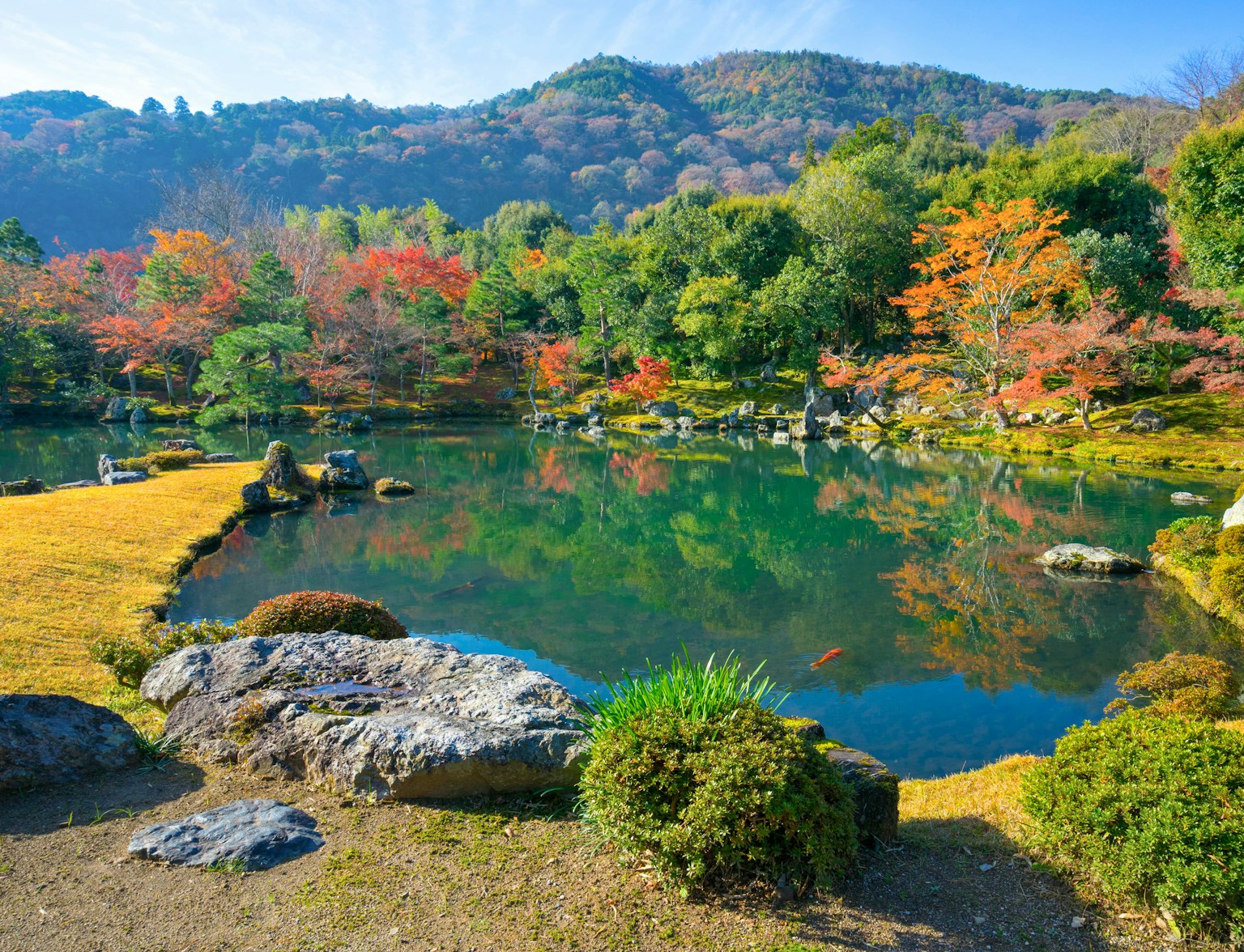
建议在夏季访问嵐山竹林。
日本的秋天色彩斑斓,树叶变成金色、橙色和红色。清新的空气和晴朗的天空使这个季节成为拍摄风景的完美时机。尽量捕捉树叶的温暖色调与天空的冷蓝色之间的对比。使用偏振滤镜增强色彩并减少眩光。而且不要忘记实验不同的构图和角度,以捕捉日本秋季风景的美丽。

除此之外,秋天也是捕捉传统节日和仪式的好时机,例如秋分和丰收月亮节。这些活动为了解日本的文化和传统提供了独特的视角,为捕捉当地人的真实瞬间提供了很好的机会。

在名古屋的白鸟庭园捕捉秋天的色彩。
日本的冬天是一个宁静美丽的时刻,雪覆盖了景观,将其变为冬季仙境。雪的纯白色与深绿色的常青树以及色彩缤纷的寺庙和神社形成鲜明对比。为了捕捉完美的镜头,试着找到一个视野良好的地点,如山顶或屋顶。使用广角镜头捕捉壮阔的视野,不要害怕尝试不同的构图和角度。
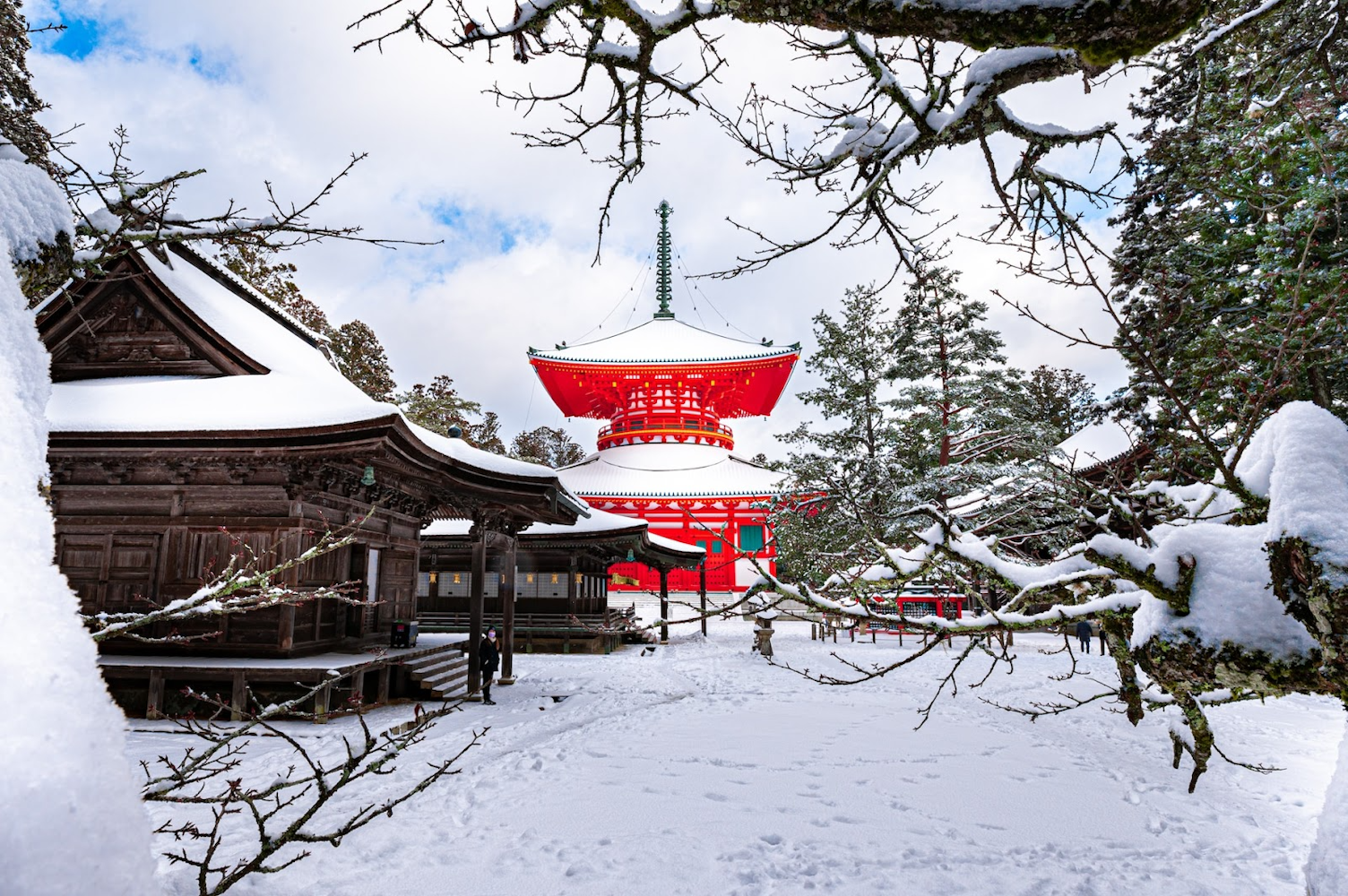
除了风景,冬天也是捕捉传统冬季活动的好时机,如滑雪、单板滑雪和雪鞋行走。这些活动提供了捕捉动态和充满活力的镜头的良机,而覆盖雪的风景则提供了美丽的背景。

在高山的热门雪公园尽情享受时拍照。
日本的城市是摄影师的天堂,提供传统文化与现代科技的融合。城市风光是霓虹灯、摩天大楼和历史地标的混合体。捕捉日本城市的活力和兴奋需要敏锐的眼光和对使其特别的独特元素的理解。
东京是一个永不眠的城市,拥有 vibrant的夜生活和繁忙的街道。夜幕降临时,城市在霓虹灯和色彩缤纷的广告中焕发活力。为了捕捉最佳镜头,前往涩谷、新宿或银座,您可以捕捉到东京街道的喧嚣。使用三脚架保持相机稳定,尝试不同的角度和构图,不要害怕使用慢快门速度来捕捉经过的汽车和人群的运动模糊。
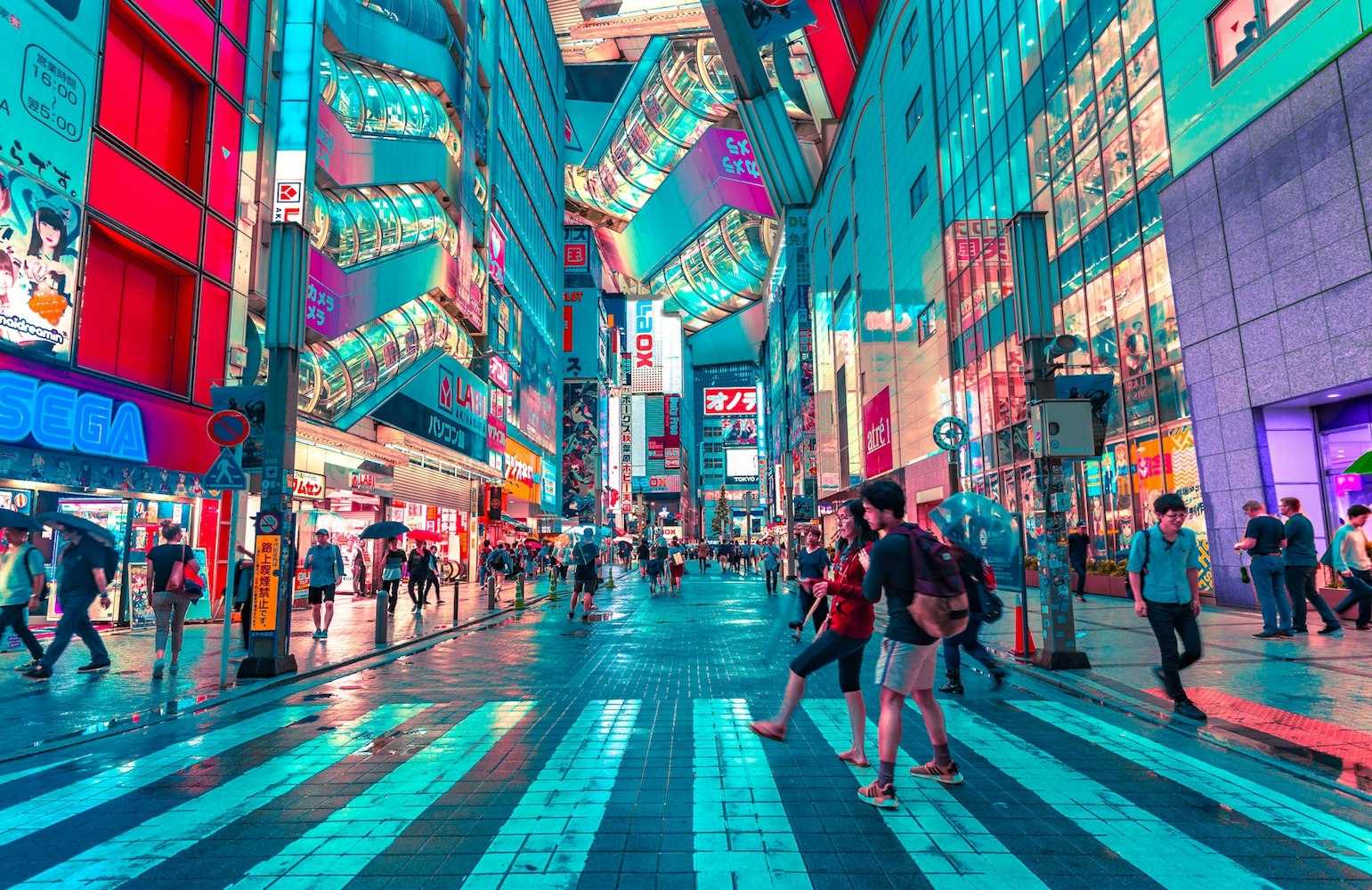
除了霓虹灯,东京还拥有一些世界上最具标志性的地标,如东京塔和彩虹桥。这些地标为拍摄壮丽的城市风光提供了良机,特别是在日落或夜晚照明时。
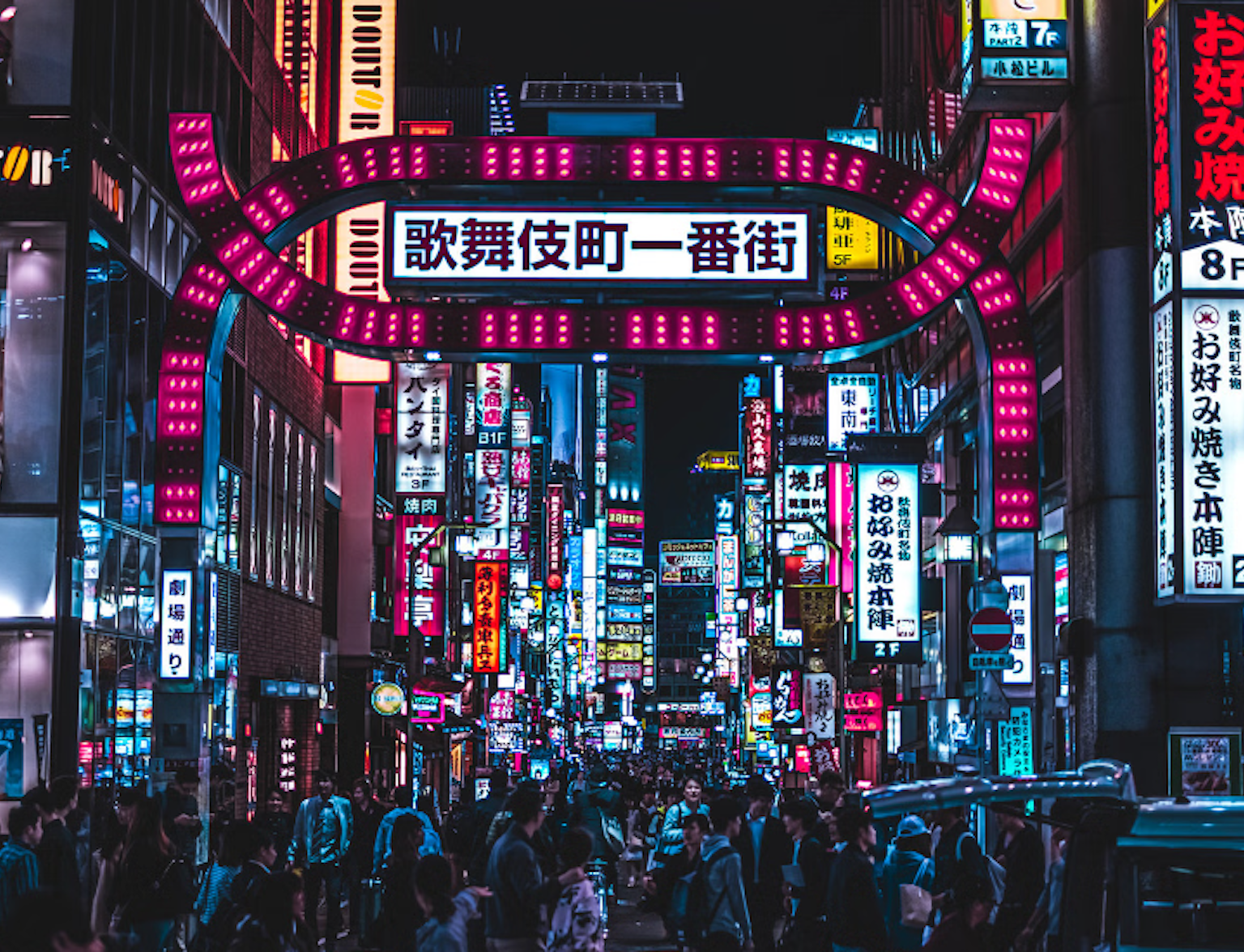
见证黄金街,体验居酒屋文化。
大阪 被称为日本的美食之都,其 vibrant的美食场景为捕捉独特而难忘的图像提供了无尽的机会。城市的街头小吃摊,或称为屋台,为拍摄当地美食如章鱼烧和御好煎提供了多彩而生动的背景。热闹的道顿堀区是另一个很好的位置,可以捕捉到大阪美食场景的活力和兴奋。
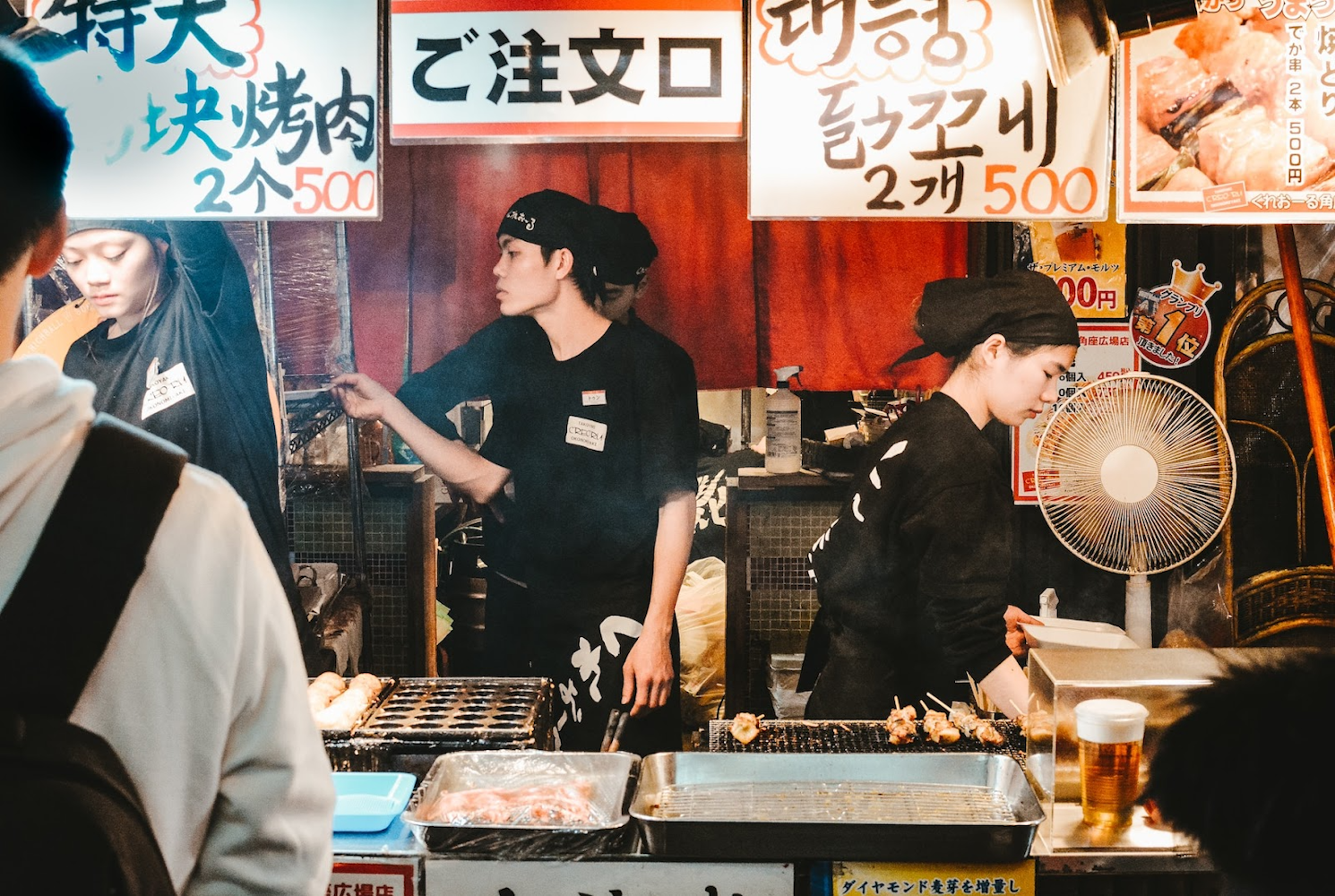
除了美食,大阪还有一些日本最具标志性的地标,如大阪城和梅田空中庭园大厦。这些地标在夜晚光彩熠熠时为拍摄壮观的城市景观提供了很好的机会。
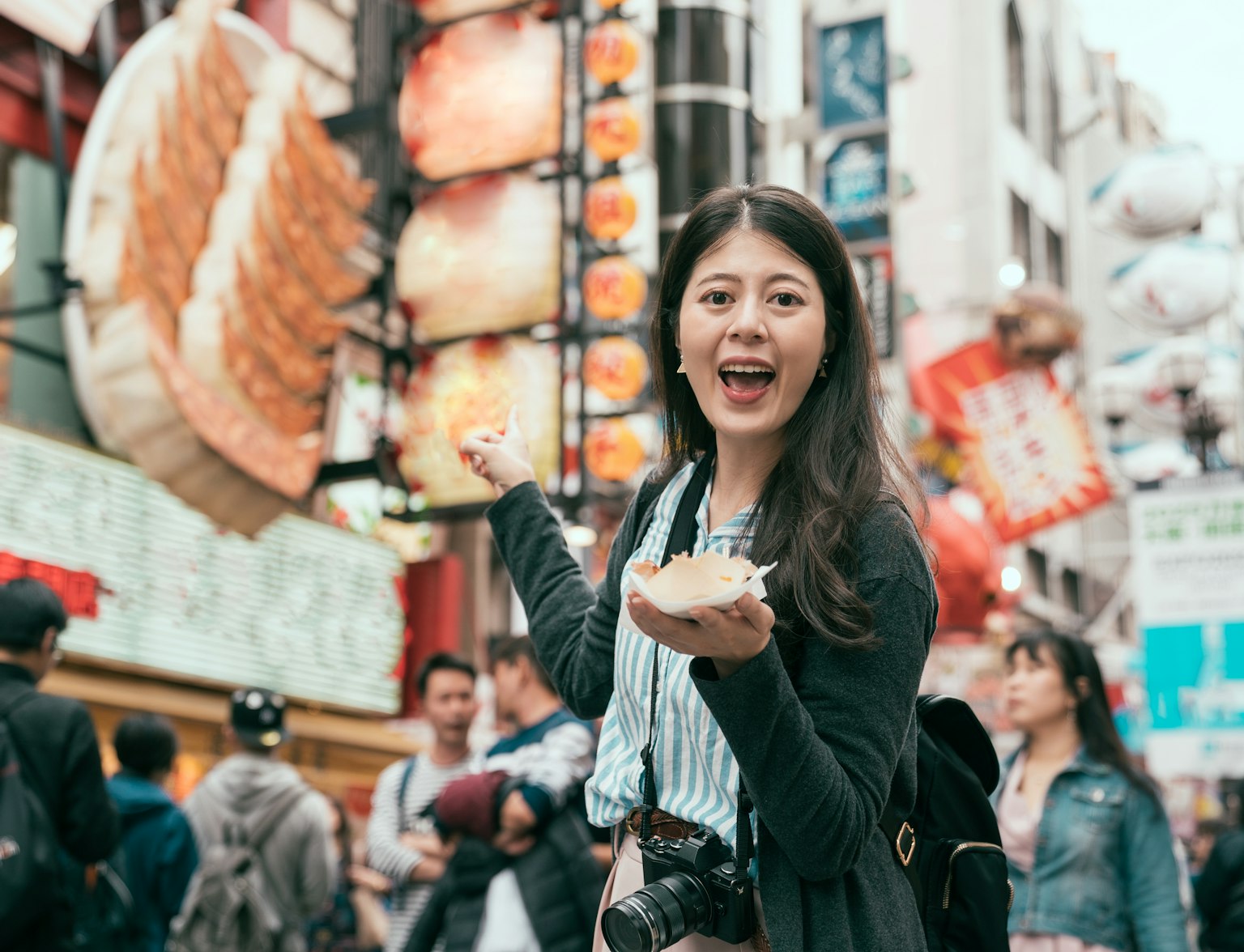
在大阪必试。
日本的寺庙、神社和历史地标不仅美丽,还代表了日本丰富的文化遗产。要在您的照片中捕捉日本过去的精髓,理解使这些地方如此特别的独特元素,灵敏而尊重地接近它们是很重要的。
寺庙和神社是日本最具标志性和美丽的地方,其惊艳的建筑和宁静的环境。然而,它们对日本人民也有很大的文化和宗教意义,因此,以敬意和敏感对待是重要的。请注意摄影的任何限制,避免拍摄祈祷或进行仪式的人。
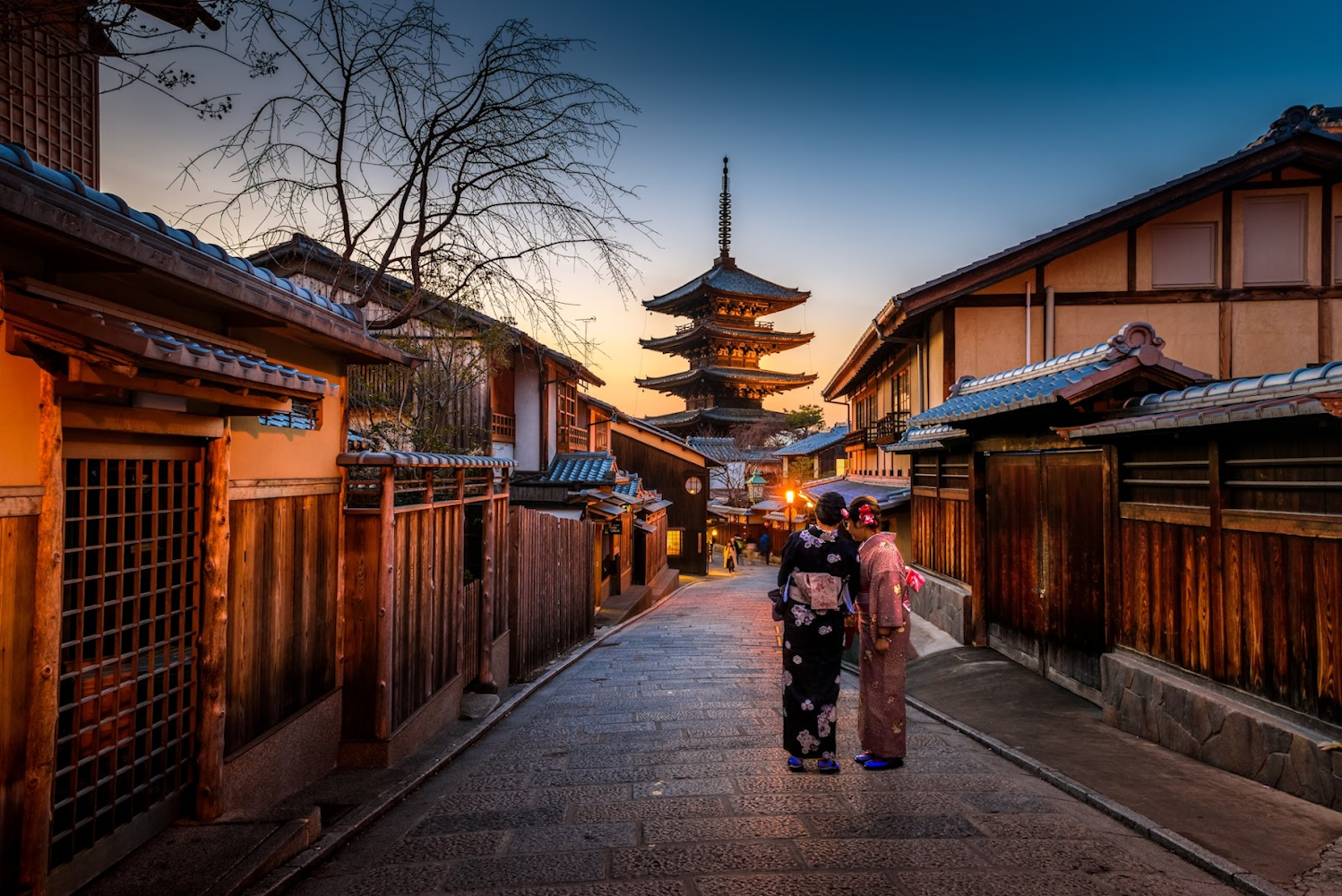
拍摄寺庙和神社时,捕捉使这些地方独特的细节至关重要。复杂的雕刻、图案和装饰都是其美丽的一部分,微距镜头可以是捕捉这些细节的绝佳工具。请务必尝试不同的角度和构图,以创建独特而难忘的图像。
京都 是日本的古都,其历史地标提供了对日本丰富过去的瞥见。城市狭窄的街道和传统的建筑为街头摄影提供了美丽的背景,而许多花园和公园则为捕捉日本自然风景的美提供了宁静的环境。
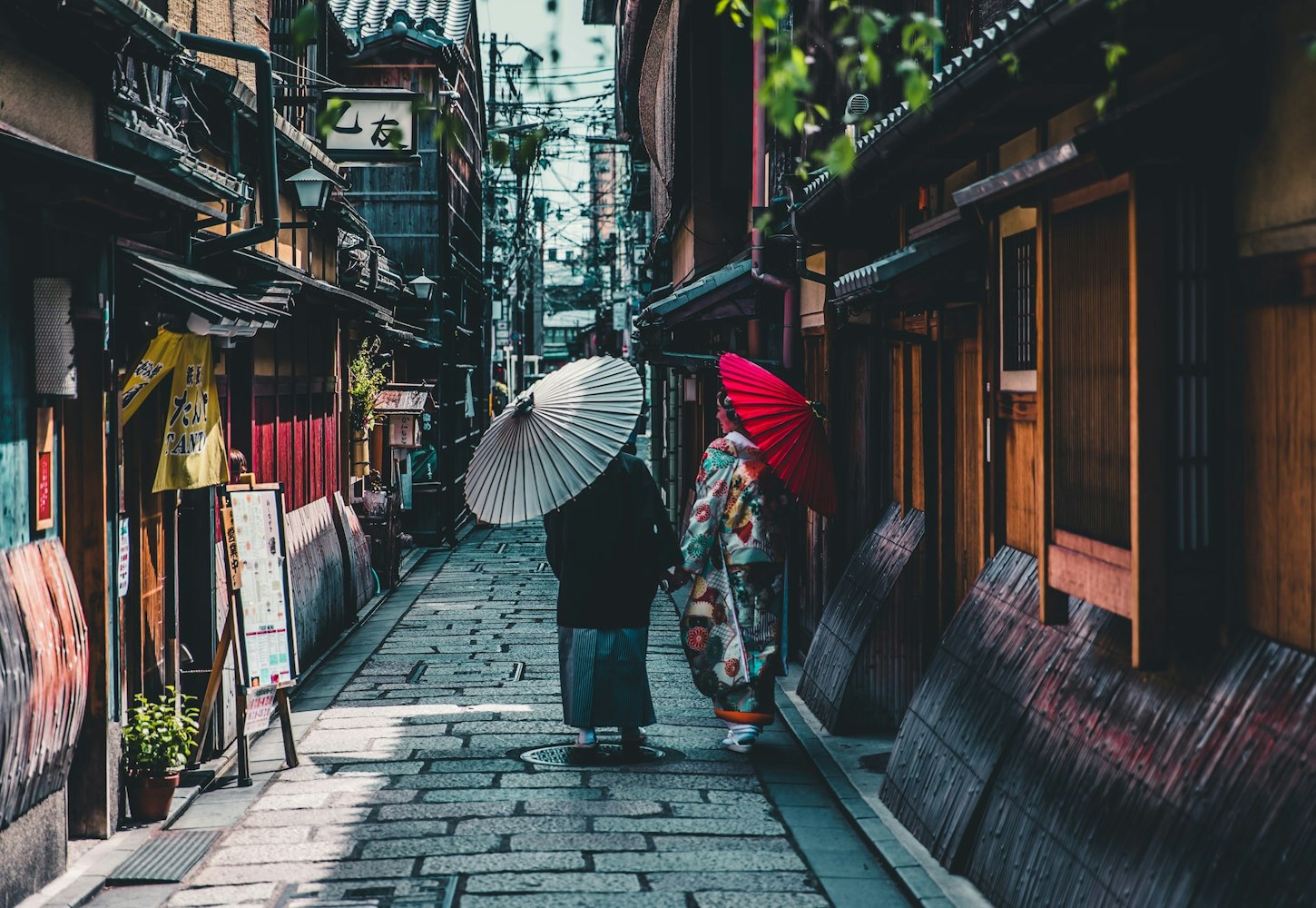
在京都摄影时,重要的是要了解城市的许多文化和历史遗址,并尊重人们及其传统。某些地点可能对摄影有所限制或在特定日子关闭,因此提前规划访问并研究您计划拍摄的地点至关重要。此外,京都还举办一些日本最著名的节日,如祇园祭和葵祭,这些节日为捕捉传统服装和仪式提供了独特的机会。
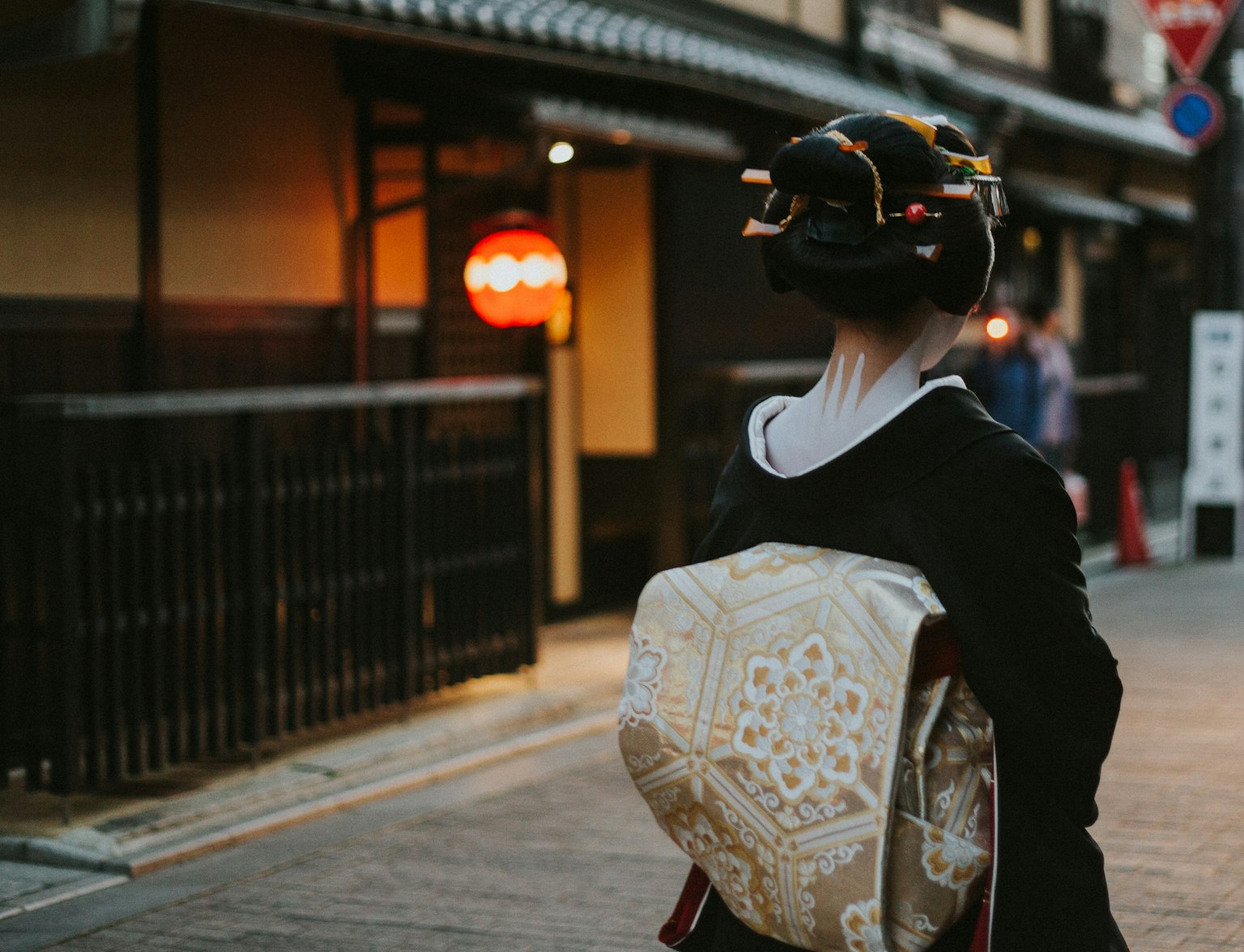
探索京都老城,了解更多关于日本文化的信息。
食物是日本文化的一个不可或缺的部分,该国的美食因其美丽、多样性和口味而受到赞誉。从东京的街头摊位到京都的米其林星级餐厅,日本提供了无尽的机会来捕捉构成其美食景观的独特和美味的菜肴。
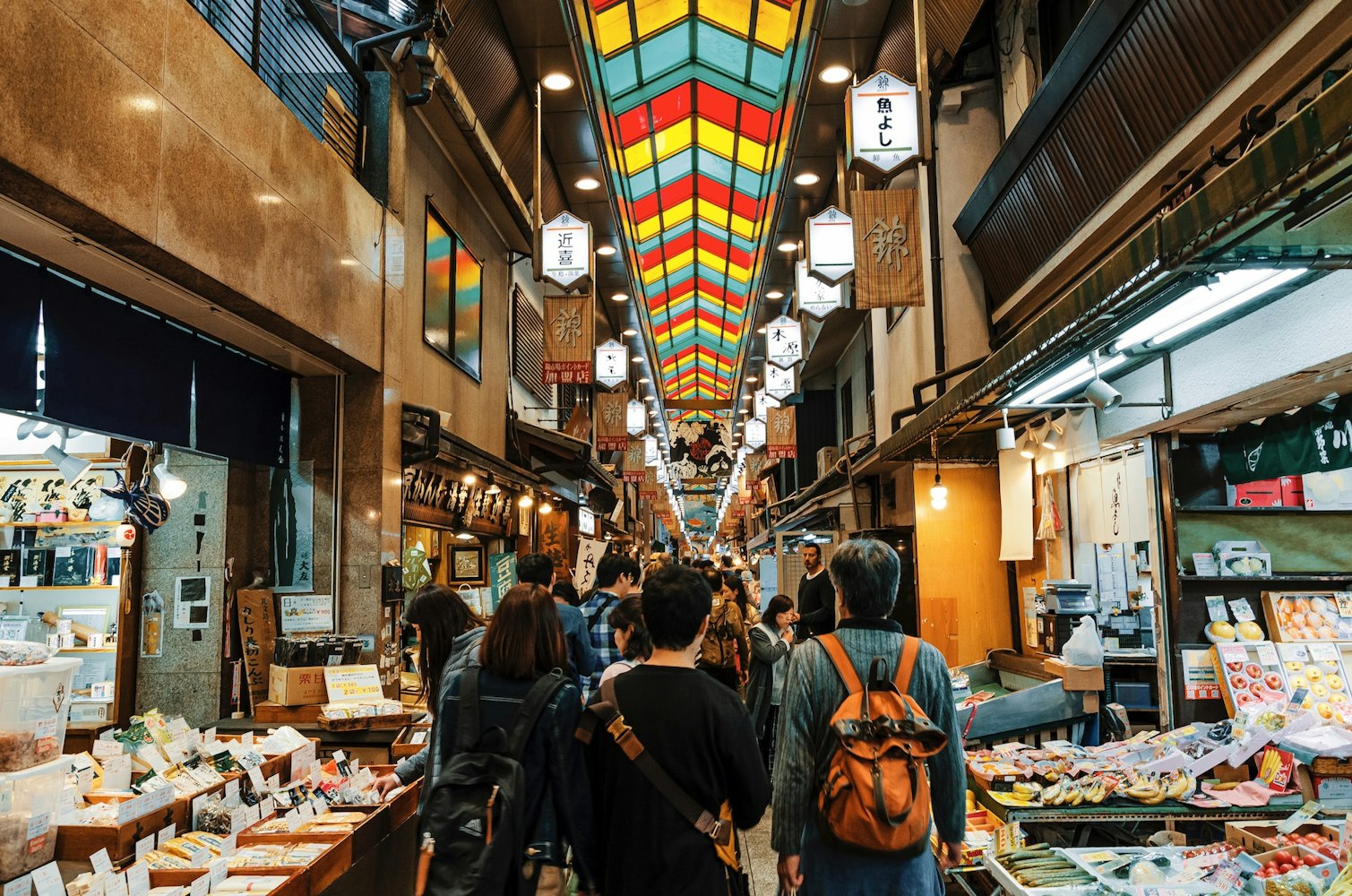
日本街头美食,或称为屋台,是每位前往该国的美食爱好者必尝的。无论是章鱼烧、烤鸡串还是御好煎,日本街头美食的种类令人震惊。为了捕捉日本街头美食的活力和能量,关注人们以及食物。拍摄当地人用餐和与摊贩互动的抓拍镜头,或记录制作食物的过程。
在拍摄日本街头美食时,尊重摊贩及其客户是很重要的。在拍照前询问许可,并注意与食物相关的任何文化或宗教习俗。
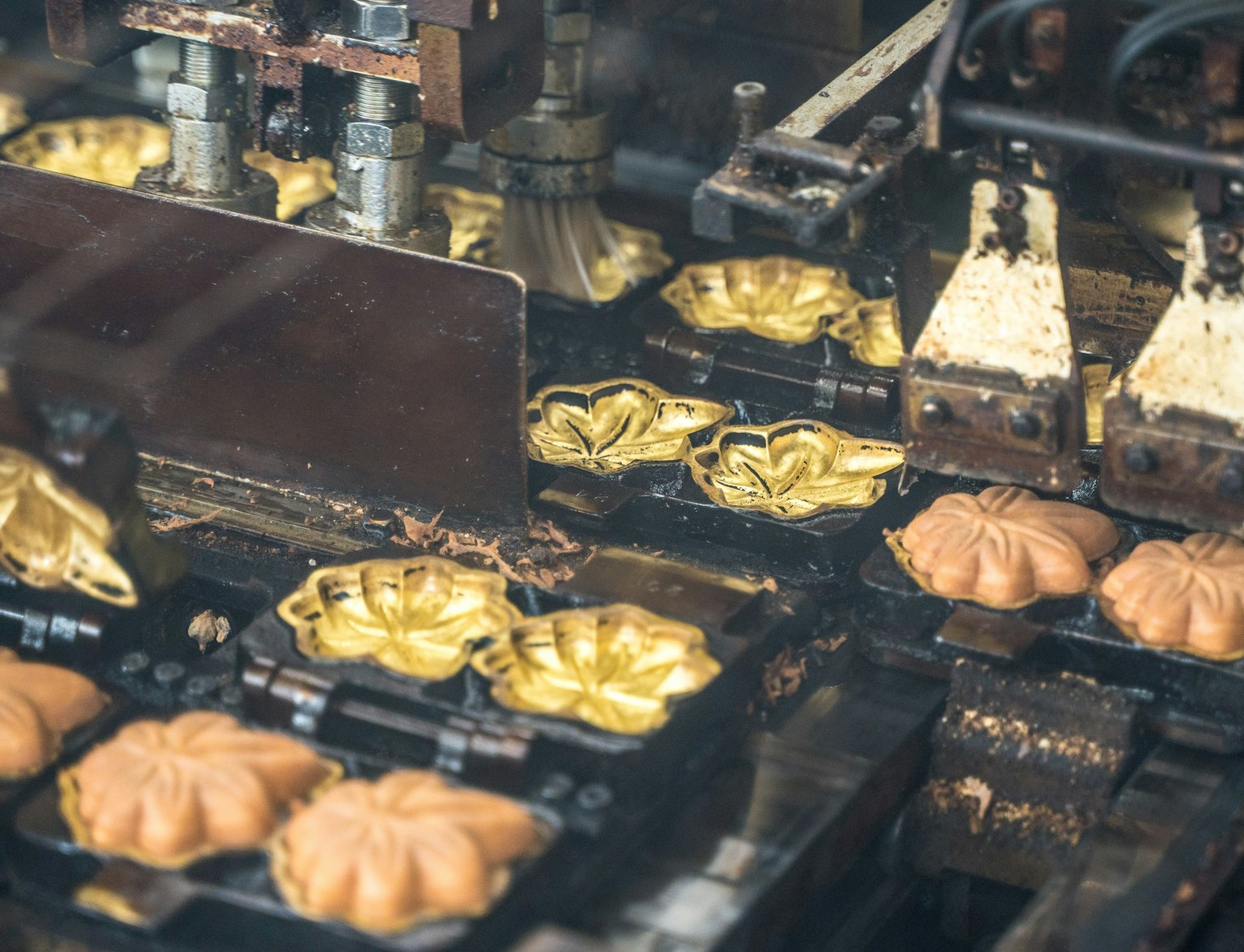
尝试一下东京的美食之旅。
日本也是世界上一些最具创新性和创造性的高档餐饮体验的发源地,许多餐厅获得米其林星级。食物的呈现与味道同样重要,许多餐厅创造出令人惊叹的烹饪杰作,既是一场视觉盛宴,也是一场味觉盛宴。

为了捕捉日本高档餐饮的艺术,关注细节。使用微距镜头捕捉菜肴的精致细节,例如细腻的装饰或独特的摆盘技巧。尝试不同的角度和构图,以创建独特而难忘的图像。
日本的花园以其宁静、美丽和注重细节而闻名。它们旨在创造自然与人造之间的和谐感,为人们提供逃离城市喧嚣的安静退隐之所。捕捉日本花园的美需要理解其独特的元素,以及对塑造其景观的季节变化的敏感性。
日本花园旨在创造和谐和平衡,这在它们的摄影中得到了体现。要捕捉日本花园的本质,关注创造平衡的元素,如水、岩石和植物。使用三脚架保持相机稳定,尝试不同的角度和构图,以创建独特而难忘的图像。

在拍摄日本花园时,尊重空间及其访客是很重要的。请注意摄影的任何限制,避免在未经许可的情况下拍摄他人。
日本花园是随着季节变化而设计的,这为捕捉其美提供了独特机会。从春天的樱花到秋天的火红,到冬天的宁静,每个季节为花园提供了不同的视角。
为了捕捉日本花园的季节变化,请提前规划您的访问,并研究每个季节的最佳访问时机。利用植物和树木的颜色和质感变化来创造独特而令人难忘的图像,并对您访问期间出现的意外时刻保持开放的心态。
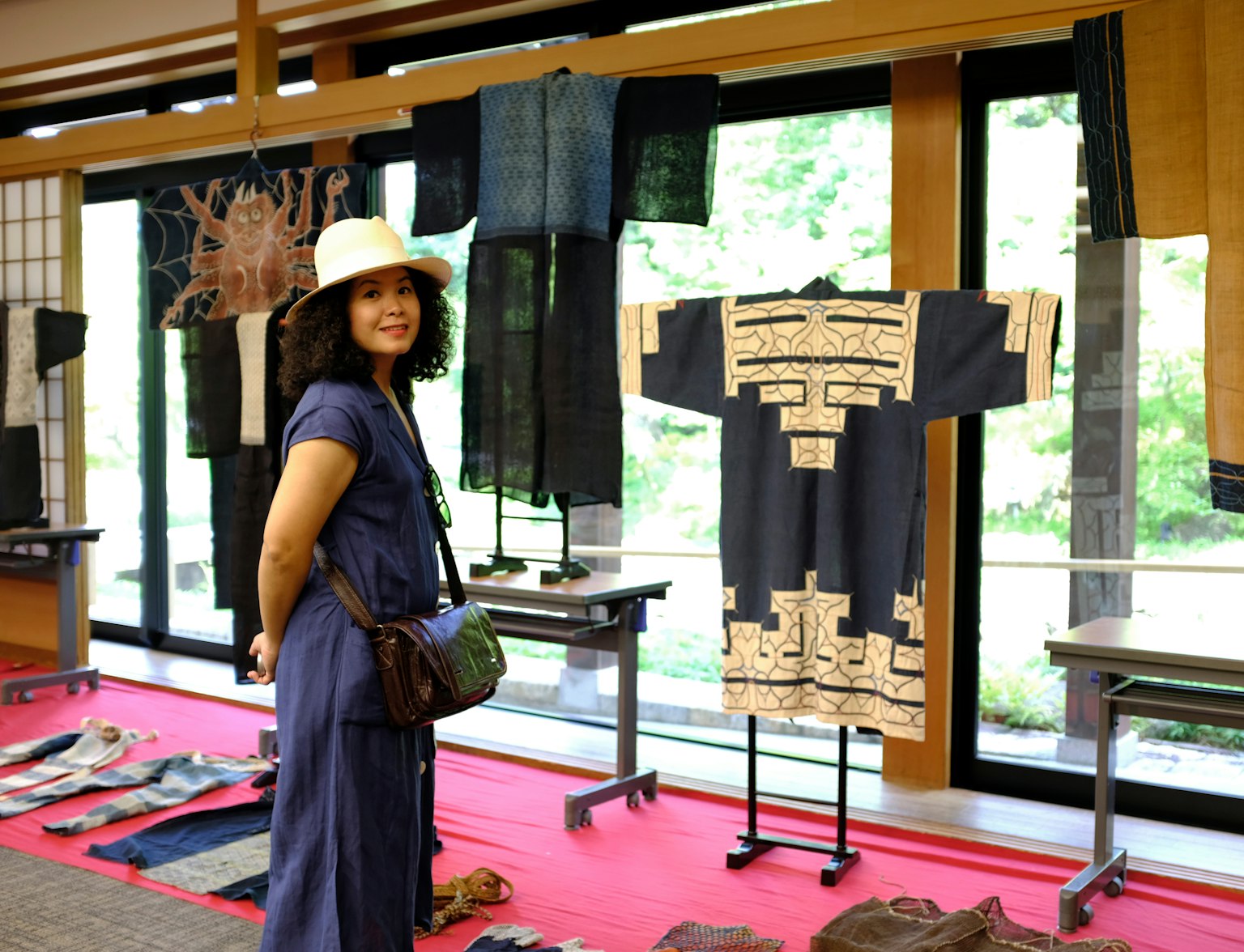
在德川园欣赏真实日本庭园的美丽与宁静。
摄影是捕捉日本美的强大工具。凭借古老传统与现代科技的独特结合,这个国家提供了无数的拍摄主题。无论您对东京多彩的城市风光、京都寺庙和花园的宁静之美,还是北海道的壮丽自然风光有何种向往,日本的摄影机会都不胜枚举。在您踏上日本摄影之旅时,请记住保持开放的心态和好奇心。尝试不同的技巧,寻找独特的视角,最重要的是享受这个过程。无论您是经验丰富的专业人士还是热衷的业余爱好者,日本都提供了丰富的机会,以捕捉令人惊叹的图像,并创造出将持续一生的回忆。所以打包好您的相机,通过镜头探索日本的美丽。凭借一点创意和大量热情,您可能捕捉到那张让您惊叹的完美镜头,并提醒您日本为何真正是摄影师的天堂。
As you embark on your photographic journey through Japan, remember to keep an open mind and a sense of curiosity. Experiment with different techniques, seek out unique perspectives, and most importantly, enjoy the process. Whether you are an experienced professional or an enthusiastic amateur, Japan offers a wealth of opportunities for capturing stunning images and creating memories that will last a lifetime.
So pack your camera, and explore the beauty of Japan through your lens. With a little creativity and a lot of passion, you might just capture the perfect shot that takes your breath away and reminds you why Japan is truly a photographer's paradise.
